Datasets are easier for search engines to discover when information such as names, a description, creator (and more) are provided in the form of structured data. Fortunately, this couldn’t be easier thanks to the Dataset Schema type available in Rank Math PRO.
The purpose of using this particular Schema markup type is to simplify and make datasets from a range of fields – including machine learning, government data, and more – accessible. You can actually browse and explore such datasets by using Google’s Dataset Search tool.
For reference, in terms of what qualifies as a dataset – this is virtually any table, collection, or structured object that comprises data that, in its entirety, you would consider a dataset or collection of data.
Table Of Contents
How to Add Dataset Schema to Your Posts/Pages PRO
Before we begin, you’ll need to ensure that Rank Math’s Schema module has been enabled on your website by navigating to Rank Math SEO → Dashboard in your WordPress admin area.
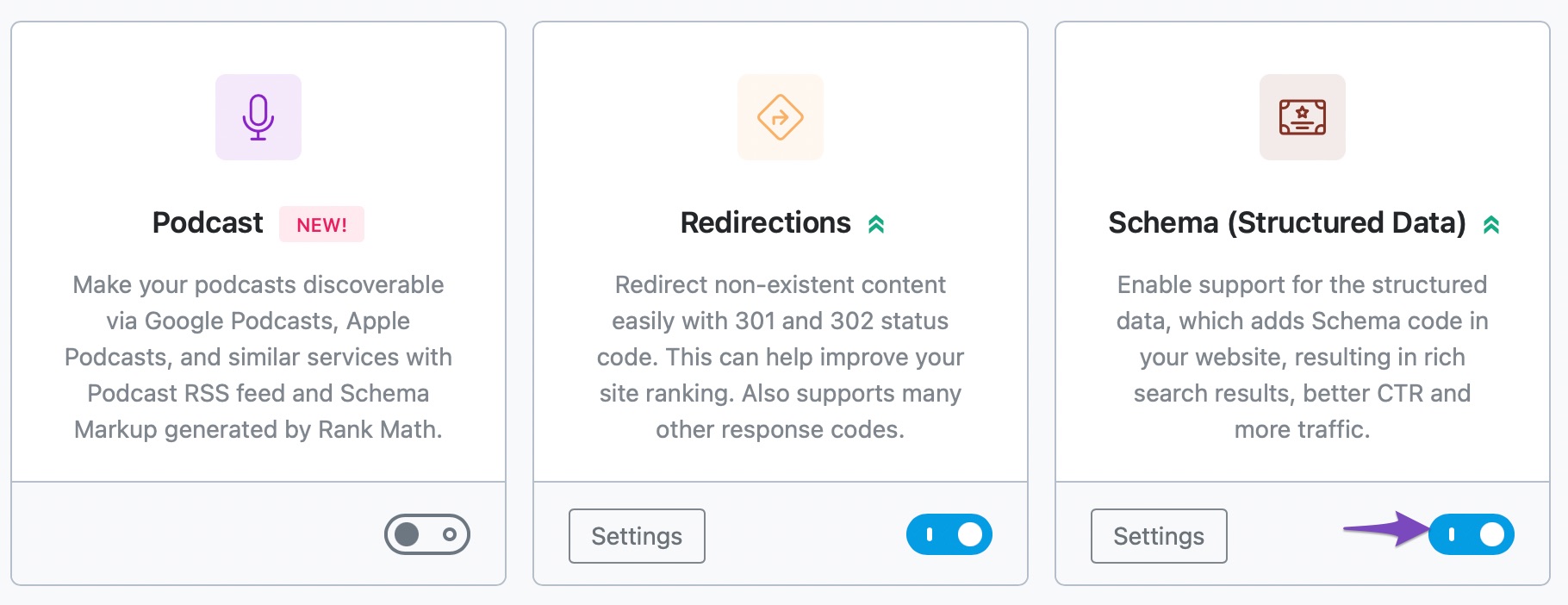
In this tutorial, we’ll walk you through how to use the Dataset Schema type on a post or page, as well as the various available settings for it – let’s get started:
1 Edit Your Post or Page
To set the Dataset Schema type open your post/page by clicking on Edit post.

2 Open Rank Math in the Gutenberg Sidebar
Click on Rank Math SEO to open the Rank Math Meta Box.
Alternatively, you can click the three vertical dots in the top-right corner of the page and select Rank Math in the Plugins section.
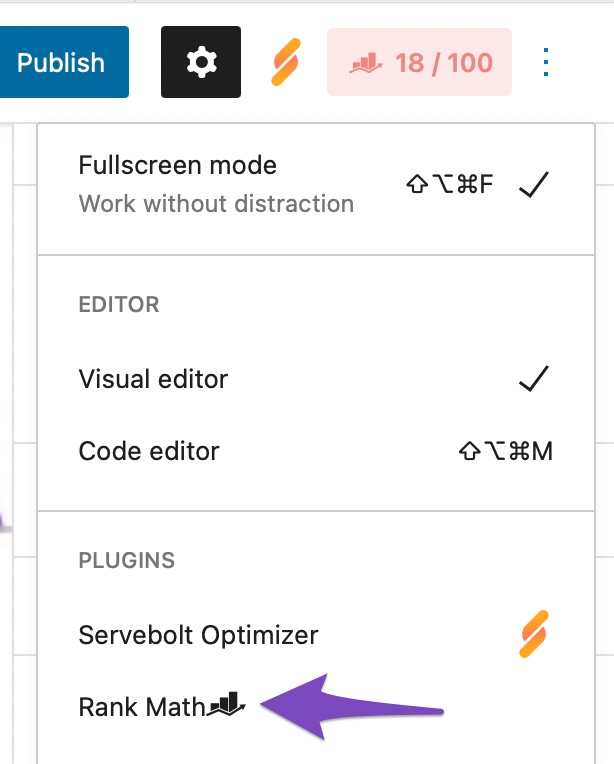
3 Navigate to the Schema Settings for This Post/Page
Click on the Schema tab in the Rank Math Meta Box. If it doesn’t appear here, ensure that you have Rank Math set to Advanced mode. Then click on Schema Generator.
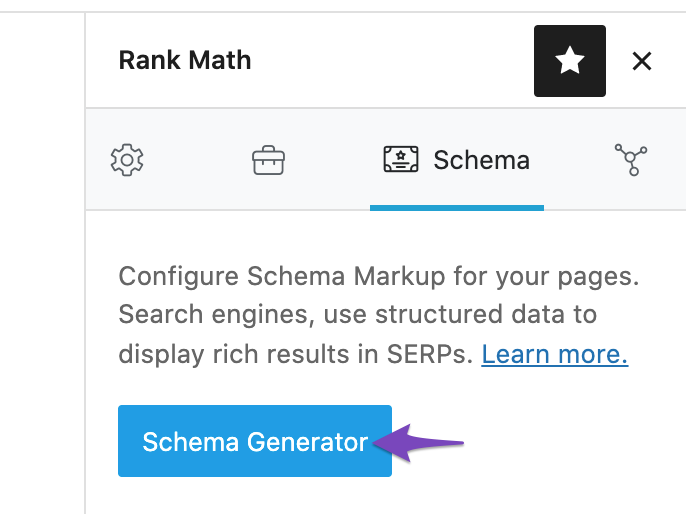
4 Navigate to the Schema Builder
Click on Use against the Dataset Schema to open the Schema Builder. You can find Dataset only in the PRO version. If you have not installed Rank Math PRO, then we recommend you to install the plugin in order to use this Dataset Schema.
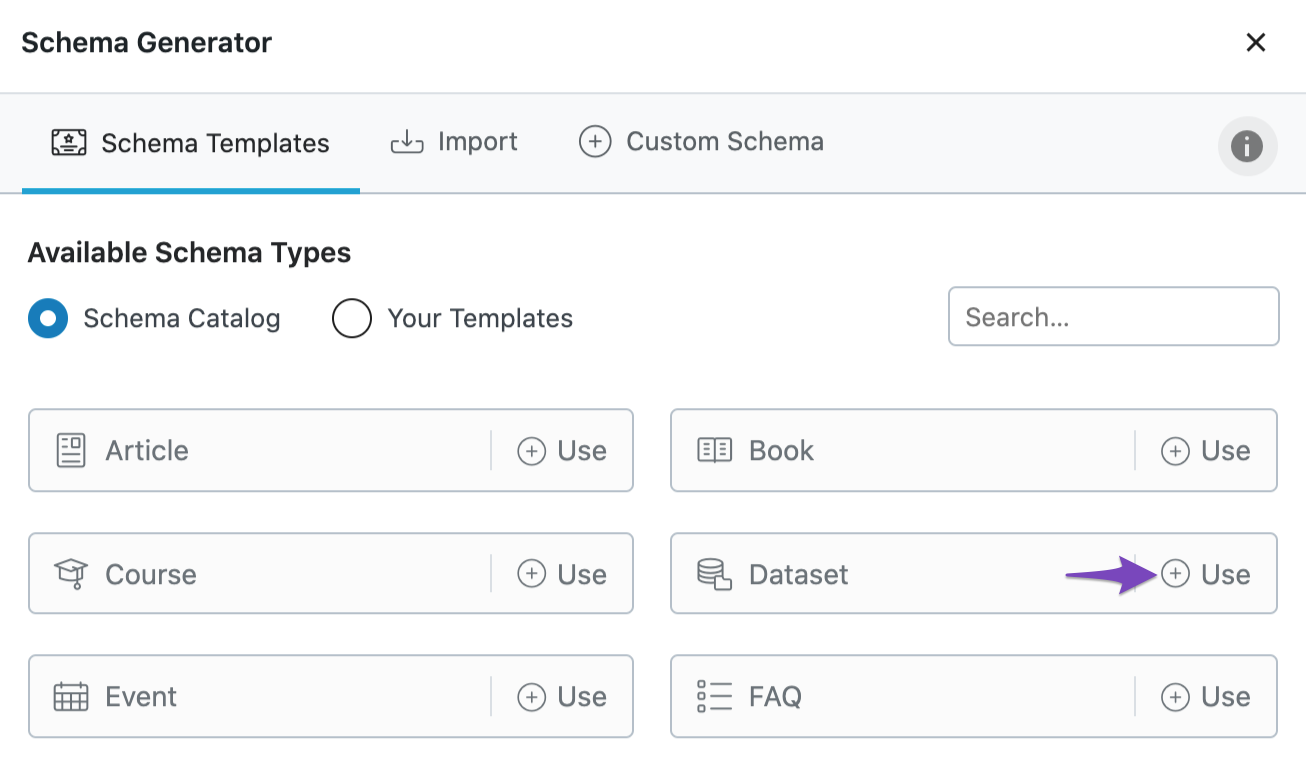
The Schema Builder will then show up, and you can see the options as shown below:
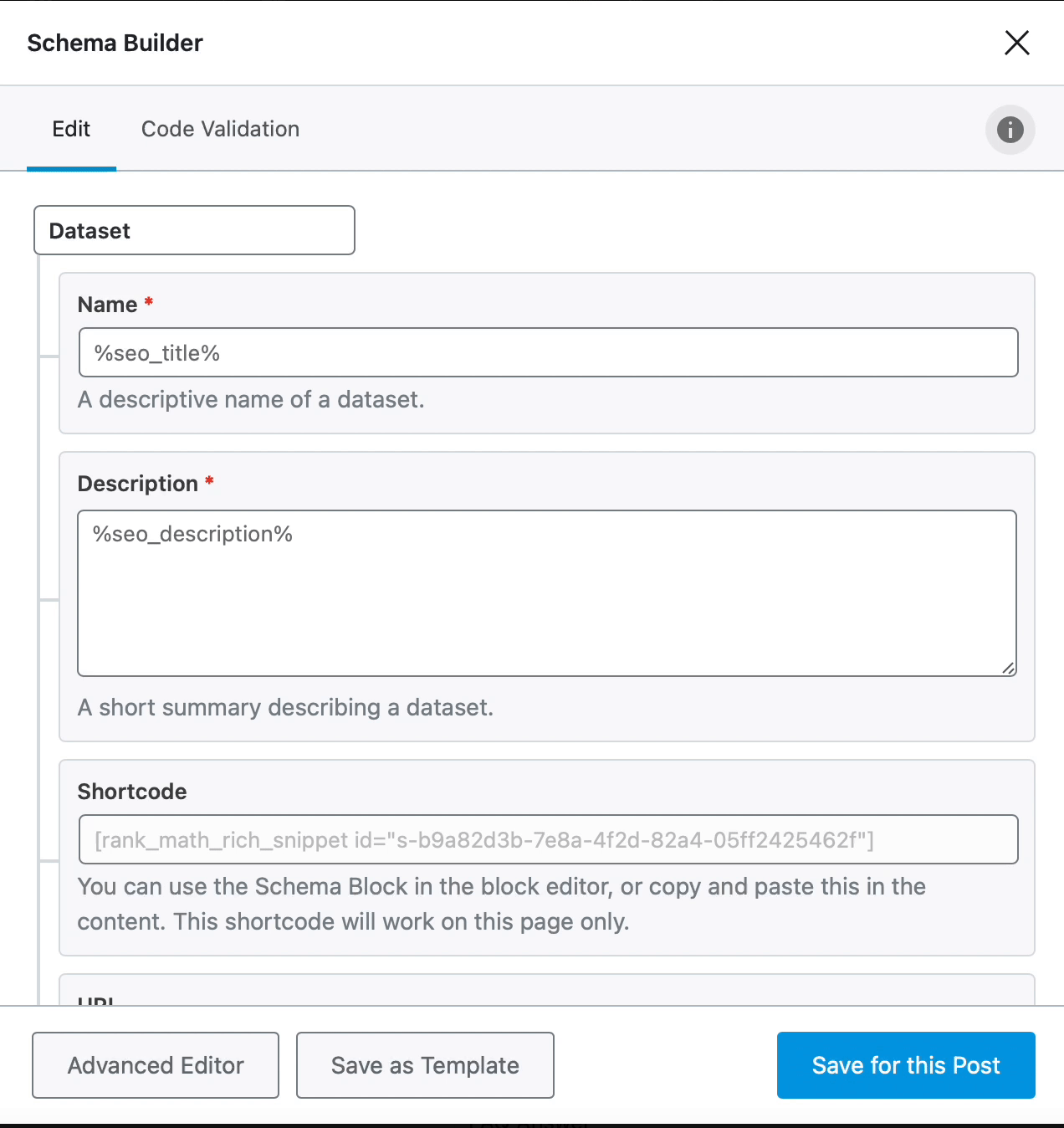
Options available in the Schema Builder of Dataset Schema
Now, let us discuss each field available here in detail.
1 Name
You can enter the appropriate name for your Dataset here.

2 Description
You can describe the dataset so that your audience can have a good understanding of it in the Description section.

3 Shortcode
You can copy the shortcode that is available here and paste it inside your content.

4 URL
You can enter the URL that describes the dataset.

5 Same As
If there is another page that describes the dataset in the same way as the field above, then add the link here.

6 Identifier
Here you can add identifiers that can explain your data set. You can include Digital Object Identifiers (DOI) or Compact Identifiers that are relevant to your dataset. If your dataset includes more than one identifier, click the Add Property button to add more fields.

7 Keywords
You can add keywords that describe your dataset. In order to add a keyword, click on Add Property and then add the keyword.

8 License
You can enter the license of the dataset here. Enter the URL pointing to the license, for example, https://creativecommons.org/licenses/by/4.0

9 Data Catalog
Enter the name of the data catalog in this section.

10 Temporal Coverage
If the dataset covers a specific time interval, then you can mention the time here in ISO 8601 format. Here are some examples for you:
- Single date: 2021
- Time period: 2021-01-01/2021-03-31
- Open-ended time period: 2021-01-01/..

11 Spatial Coverage
If the database includes specific geographical locations, then you can mention them here. For example, Frankfurt, Germany.

12 DataSets
If your dataset consists of multiple datasets, then you can add their info in this section. Click on Add Property Group and then fill in the below information.
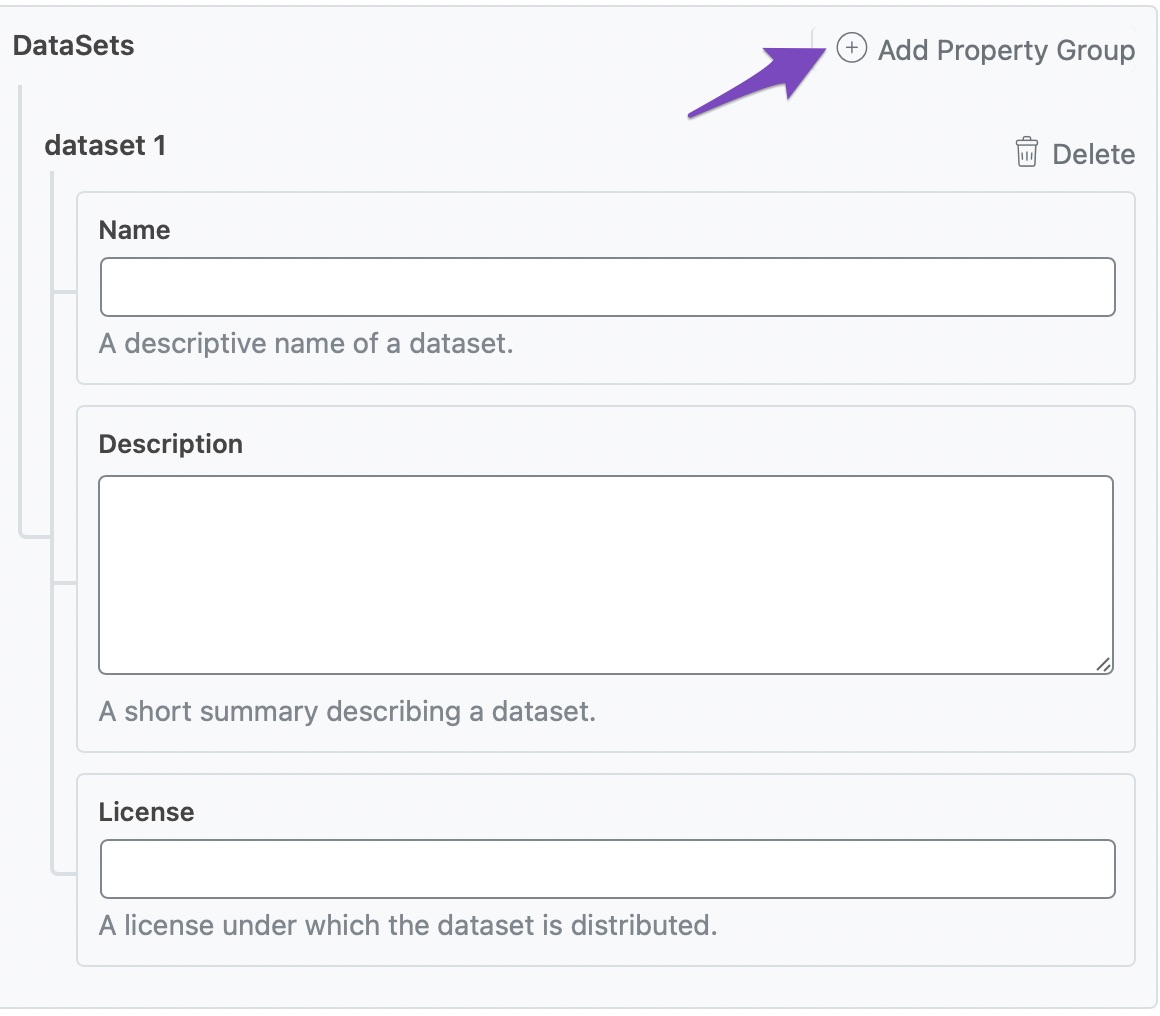
13 Distribution
If your dataset is available for download, then click the Add Property Group link and fill in the fields shown below. In the fields, you need to add the Encoding Format and the URL. If you want to share more than one dataset, then click the link again to add more property groups.
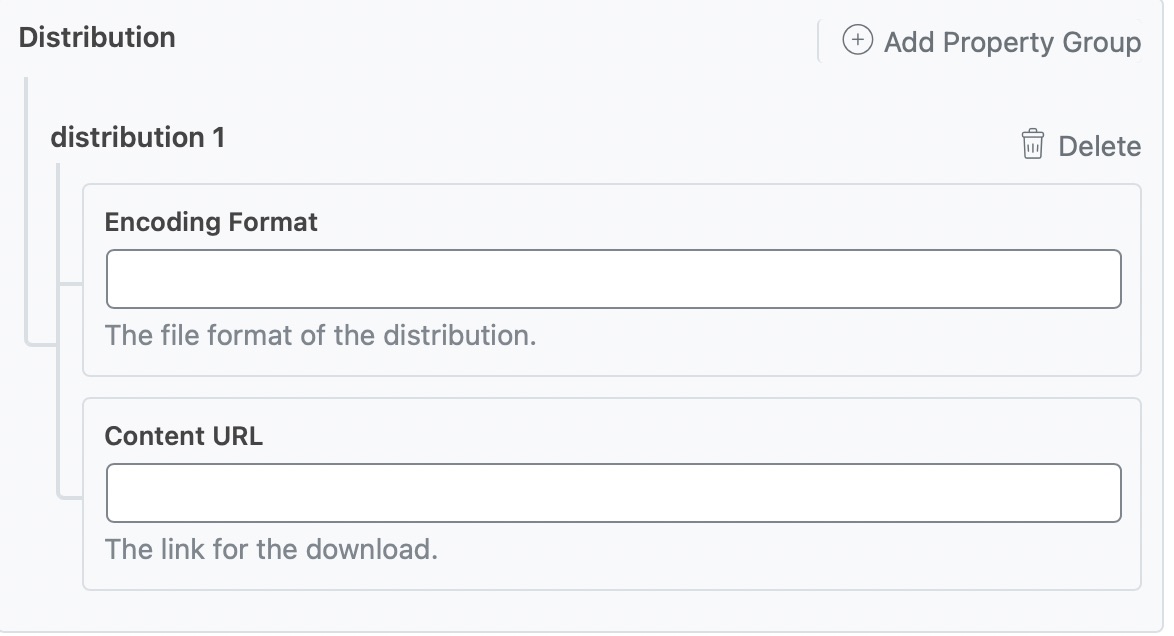
And, that’s it! Click on Save for this Post once you’re done making any changes to the Dataset Schema for this page. Then, simply update the page as you normally would after making a change or click Publish if this is a newly created page. You can then check your Schema with the help of Google’s Rich Results Testing Tool.